Noon Report:
- Location: S 30° 27.41′, E 153° 31.33′
- Speed: 14 knots
- Course: 10º
- Weather: Clear
- Temperature: 24º C, 76º F
- Wind: NNE, 17 knots
Today we had the annual stockholders’ meeting for a family business. The meeting was Friday at 9:00 am Mountain time. That’s Saturday at 3:00 am in Sydney or 2:00 am in Brisbane. And we’re traveling between those fair cities. That’s why I have a Mountain time zone clock sitting on the desk (remind me to post a “Pro Tip” about that clock).
Anyway, 0-dark:30 found us downstairs in the Finance Officer’s office. (He graciously offered it as a place to set up for the meeting.) Pretty quickly we discovered that he has internet access that is significantly better than that in our stateroom. I ran into him this afternoon and thanked him. I also offered to trade our stateroom for his office.
Anyway, the meeting was, well, a meeting (actually several meetings, but that’s another story.) Cheryl was there part of the time and then she went back to bed.
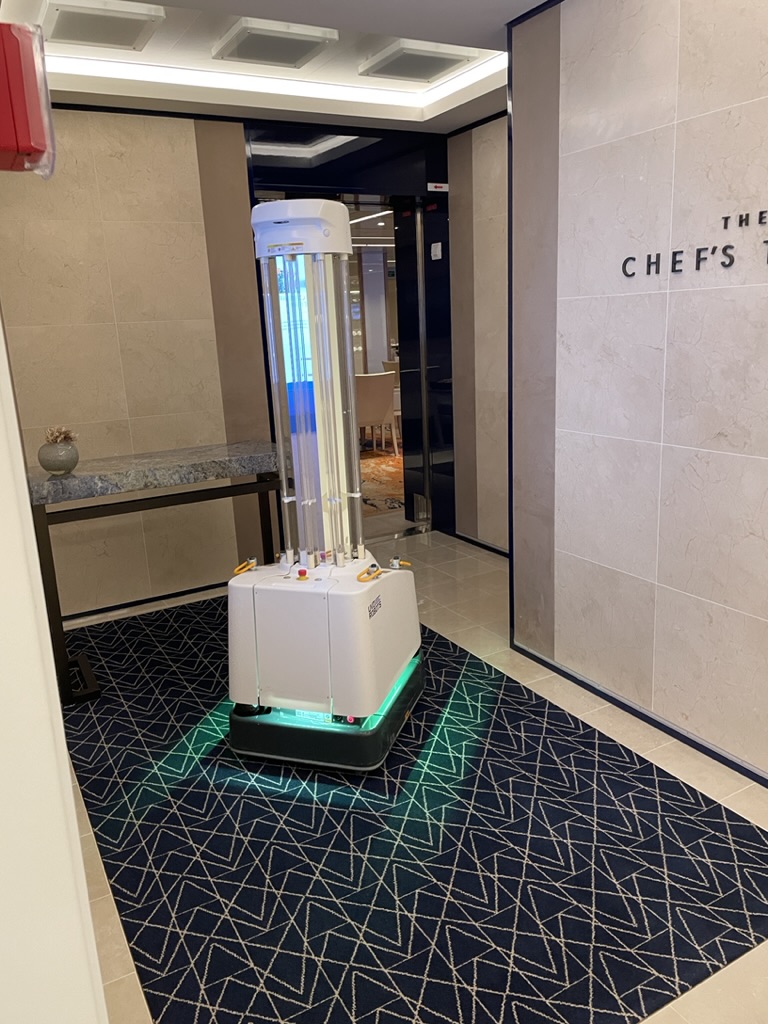
I got back to the room just before 7:00 and we went to breakfast. Then I went to bed.
Then it was lunch time. We had skipped lectures on “Australia in World Affairs” and “Who were the Convicts?” We’ll survive.
After lunch we worked on blog posts until our 3:00 lecture by the Pilot who is on board to guide us thru the Great Barrier Reef.
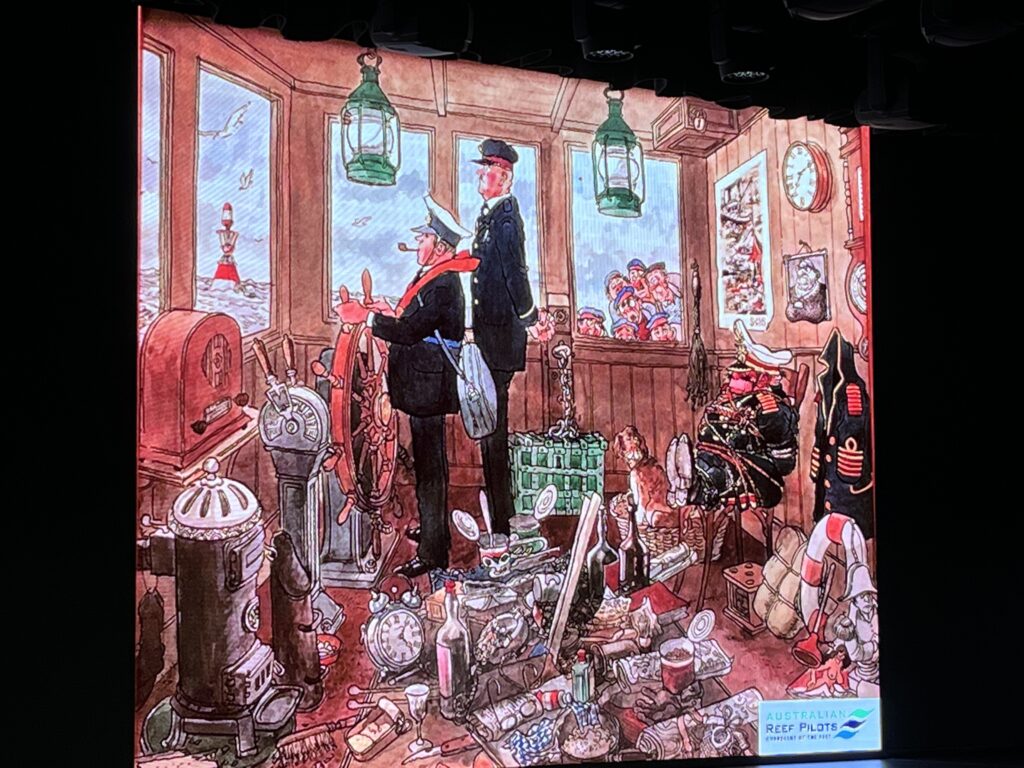
He’ll be with us for several days and since he didn’t have anything to do pilot-wise yet, they prevailed on him to talk about life as a pilot on the reef. He is probably a pretty good pilot, but he’s an excellent lecturer. He was engaging, funny, informative, interesting, and thought provoking. It was a real treat to hear him.
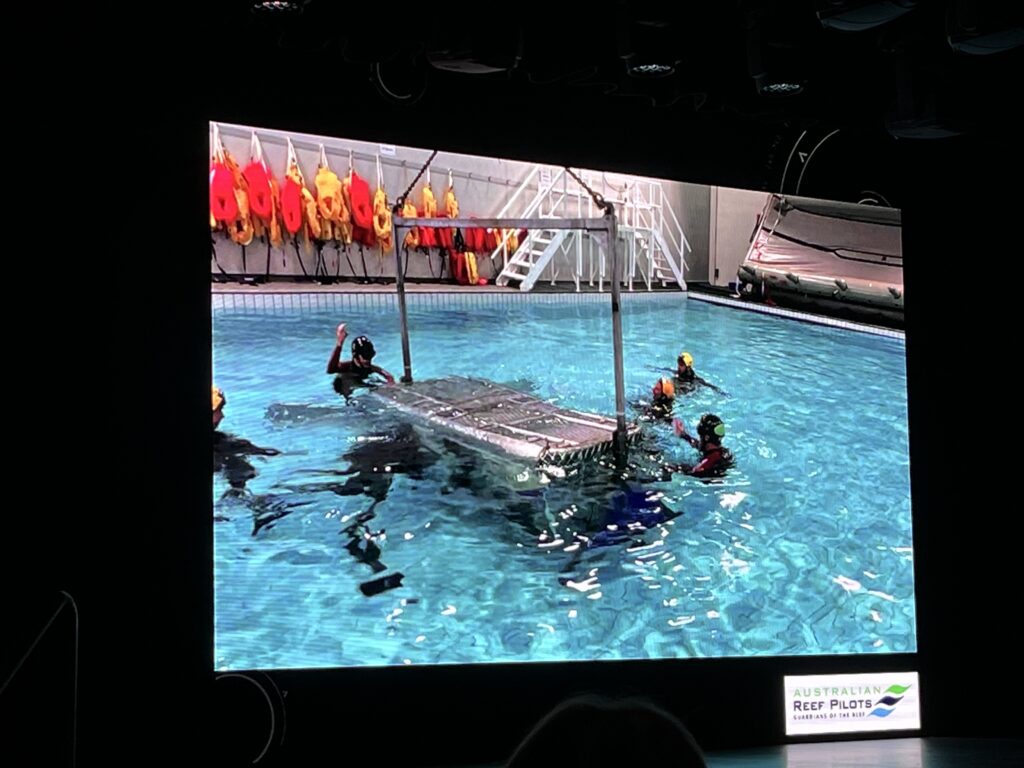
Cheryl’s factoids:
- All ships have to have a local pilot join the ship to guide it into port.
- The harbor sends them out on a “pilot boat” which pulls up close to the ship. For larger commercial vessels the the pilot has to grab the rope ladder tossed from the lowest deck of the ship (which can be 4 stories up or more) and start climbing. When their job of guiding is done they rappel down the side of the ship and hopefully land on the pilot boat tossing alongside.
- Cruise ships are easier because they have openings closer to sea level.
- Australia requires a pilot both on ships sailing up and down INSIDE the Great Barrier Reef AND on the ships outside the reef and trying to sail through the few “straits” open between reefs (in this case the pilot has to be flown in by helicopter, which is why it is required to practice how to escape from an upside down helicopter in the dark).
- The pilots stay awake night and day (with a few short naps in between) until the transit is complete.
- In one of the tests before you can become a reef pilot, you are handed a piece of paper with a couple of blobs of unmarked reefs: you have to recognize their position in the reef chain, label the ocean currents around them, and mark in the various ocean depths so ships would have enough clearance beneath their keels (which also depends on where the tide is at that time).
- Another tricky factor is that the Indian Ocean (where we are headed) has one tidal cycle per 24 hours while the Coral Sea (eastern coast of Australia) has two! This will become important when we have to pass through the narrow pinch point (the Torres Strait) between the tip of northern Australia and the southernmost part of New Guinea.
Next up was a port talk on Airlie Beach in the Whitsunday Islands – where we’ll be on Monday.
Then it was back to the room for a bit more Blog work before dinner and BBB (17/33). Tonight the format was a bit different. For each song that Bruce named he would ask for the artist who made it famous, or the movie it was noted for, or the musical where it appeared. I spent most of the time shaking my head, and much of the rest of the time offering the wrong answers.
We capped off the night in the Theatre where the vocal quartet delivered a power-packed tribute to “The Sounds of Motown.” We had seen the show before on a prior cruise and these kids did an excellent job bringing the spirit of hits by the Commodores, Diana Ross, the Jacksons, Smokey Robinson, and more.
So that’s the day.
Nite all, R
Pro Tip:
Whether or not it’s necessary for business purposes, it’s often good to know what time it is where the grandkids live. Also as the ship’s movement necessitates changes in ‘ship time’ it can get confusing to be assured of the offset to use to calculate the time ‘back home.’ So I threw in a clock that sits on the desk and stays fixed on Mountain Time (our home time zone). The only trick will be to change it when the folk back home move to Daylight Savings Time (insert appropriate political comment about the stupidity of changing time twice a year).
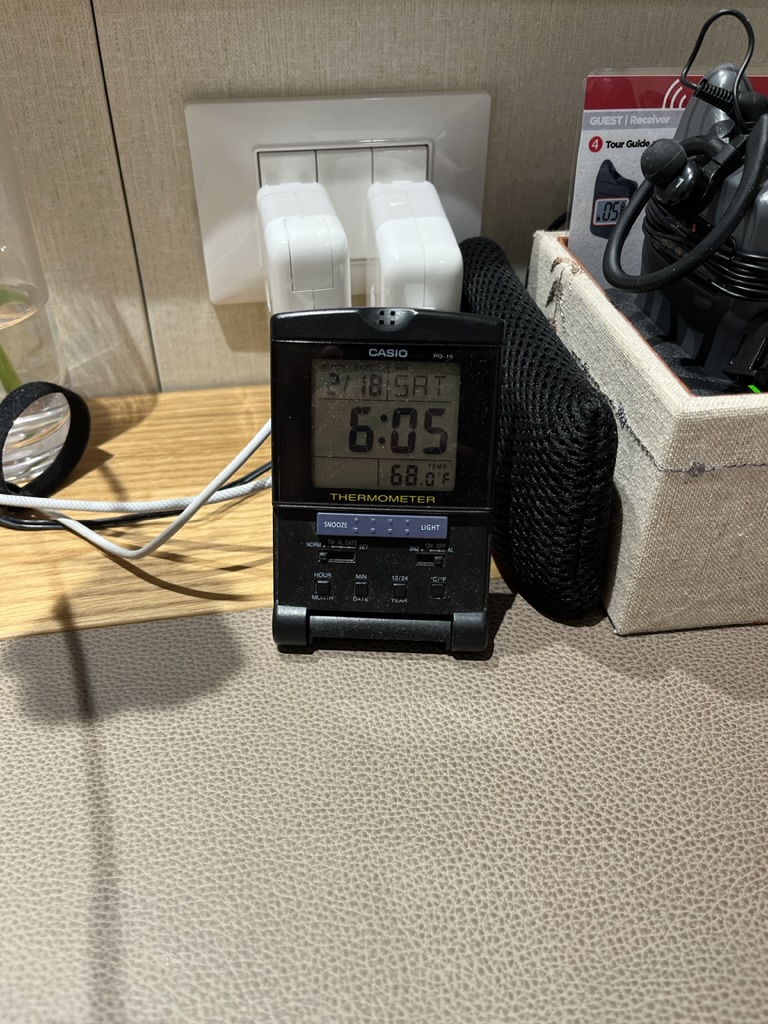
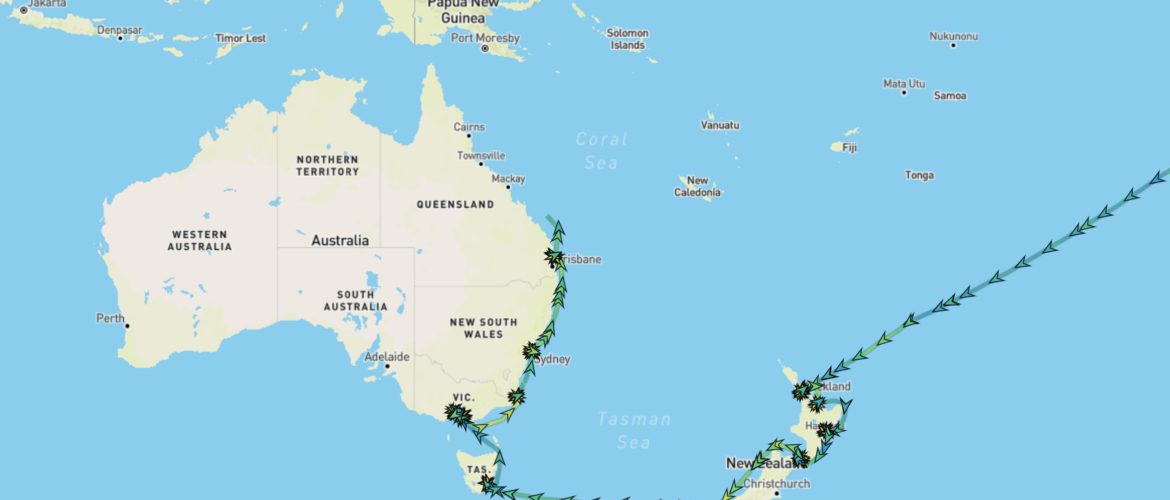
So I used to use the iPhone’s “world clock” to keep tabs on you. But then also stated keeping an eye on weather around you (“wait, your parents are headed for Wellington???” Remember that?)
But then I discovered that the iPhone weather app also displays an hour-by-hour for you. So now I just check your weather and it tells me what time it is where you are too.
Kim is a lot smarter than me. I just say “Oh, it’s sometime tomorrow” for you.
Well done putting those estimating skills to work!